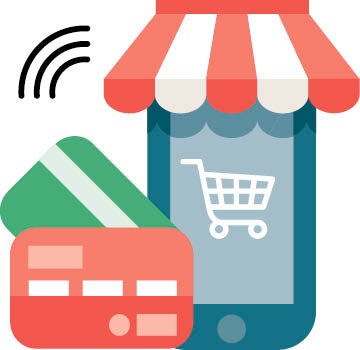Online retailers face wafer-thin margins that are continually eroded. Automation is seen as one solution and a sure-fire way to cut costs, after recouping the necessary considerable investment. What’s troubling is that companies are often making investments in automation just to maintain margins, not improve them. The good thing, however, is that some technology solutions are being democratised and are now more accessible, as well as affordable. “Automation is no longer the domain of the elite few and the quicker we can make that transition to all industries, the quicker everyone can participate,” says Thomas Frey, futurist and founder of the DaVinci Institute. There are a number of areas where companies are investing in a bid to stay ahead. Here are five…
1. Search
Finding exactly what you want, when you want it has always been an issue, whether via organic search or on-site search. Machine-learning coupled with big data is certainly making the whole process easier, with a great deal of automaton when it comes to understanding Google’s algorithms.
Yet e-commerce players are still hungry for clean uncompromised data about us and our shopping habits. The more we give, the cleverer the responses will be to our searches. “Younger consumers are pretty comfortable about sharing data these days if they get something out of it; it’s the older generation that have issues,” explains Hugh Fletcher, global head of innovation at Salmon.
There is even fully automated software out now that can help improve search engine optimisation or SEO rankings. It runs countless A/B tests on websites to hone in on the changes that need to be made.
 2. Digital marketing
2. Digital marketing
Marketing tech has rushed to add deep learning and artificial intelligence to its tool box, which has helped create robots and chatbots that allow businesses to automate basic customer service functions. The majority of business-to-consumer interactions will soon be person-to-machine rather than person-to-person. This is due to the rapid rise of robotic process automation or RPA. Think also beyond Amazon Echo, Alexa and Google Home.
The automation of both content and e-mail marketing is already prevalent. “However, with automation we can’t solely rely on algorithms,” says Georg Spielmann, presales manager at Fredhopper. “In our view, a combination of man and machine is the optimal setting for success in marketing.”
“Machines are good at finding simple patterns in large data sets. Humans are good at finding complex and visual patterns in small data sets. Therefore we recommend a healthy mix of both.”
 3. Personalisation
3. Personalisation
Consumers want highly personalised shopping experiences online. It’s not surprising then that developers have been busy writing software and algorithms that do exactly that. The aim is to deliver a more relevant and targeted customer experience from the first click through to checkout and even after-care. The purpose is to drive significant increases in awareness, loyalty and sales.
Personalisation in the digital space with a highly automated solution isn’t easy unless you have significant and clean data sets to work with. “The challenge is that there is so much data out there. Interpreting it intelligently and effectively is the issue,” says Salmon’s Mr Fletcher.
Incumbent companies that have legacy systems tend to have data sets that are myriad, unclean and inconsistent across channels, whereas fresh-starting pure-play firms with clean data don’t have enough of it or don’t have the experience to know how to analyse it properly. It’s an industry conundrum.
 4. Payments
4. Payments
Blockchain and bitcoin have been making a lot of noise, but are only nascent solutions and still quite intangible concepts in the marketplace for many, even though they show much promise. Certainly secure payment systems such as e-wallets, digital currency and tokenisation will soon become part of the automated solution.
But the biggest issue is consistent payment solutions across all channels. The e-commerce industry is abuzz with offering an omnichannel experience, which involves presenting a seamless customer experience across mobile, online and in-store.
Payment systems that are consistent across all platforms will be crucial if they are to meet people’s expectations. We all now expect a joined up and connected journey when it comes to purchasing with a significant focus on mobile payments. Digital shopping carts that are synched wherever the customer is in the shopping process will also be crucial.
 5. Delivery
5. Delivery
The next big thing is programmatic commerce. Imagine a coffee machine that’ll sense when you’re low on beans and automatically reorder. The device, connected via the internet of things, makes purchases where you’ve given your consent. The machine then makes decisions for you. “The automated fridge with a screen that tells you what needs ordering is old school. The tech has already moved on. Consumer behaviour, along with online commerce, is set to be transformed,” says Salmon’s Mr Fletcher.
Amazon Prime also has much to answer for. Consumers expect a lot when it comes to immediate dispatch, yet automated delivery requires huge levels of investment that many businesses underestimate. “Companies want to believe the answer is simple and cheap. The reality is that automating these systems isn’t. The devil is in the detail and many people fail to address the complexity of what’s needed – it’s an industry-wide issue,” says Howard Rawlings, director of Cloudberry Digital
1. Search

